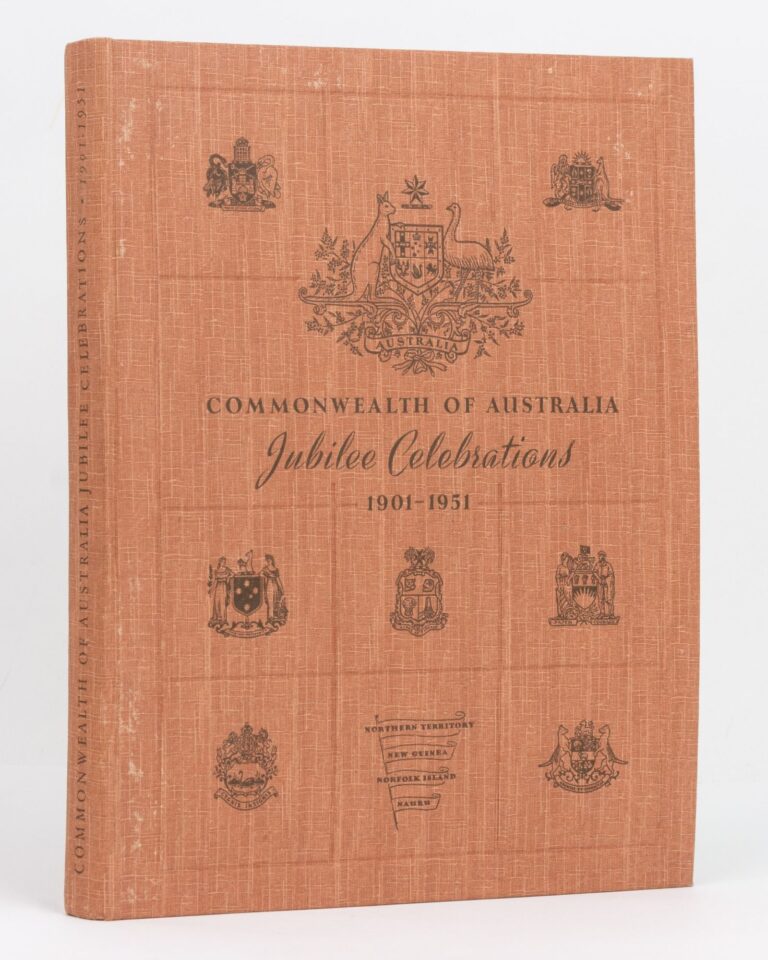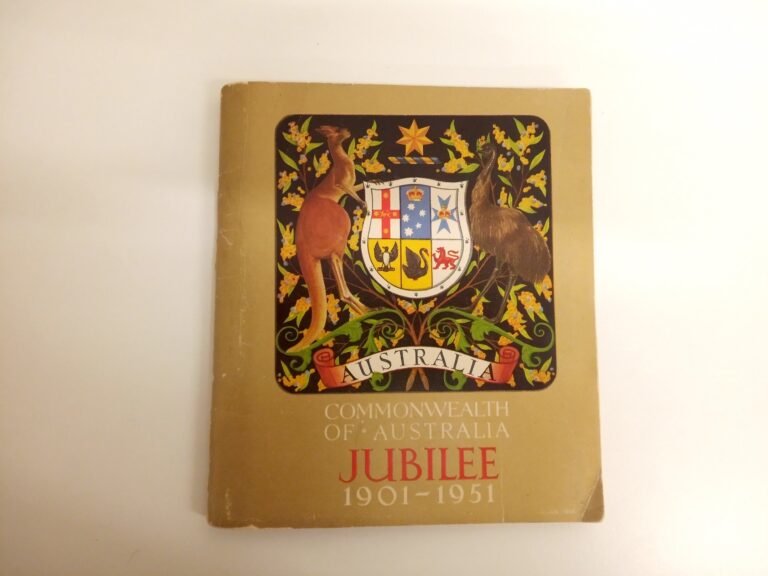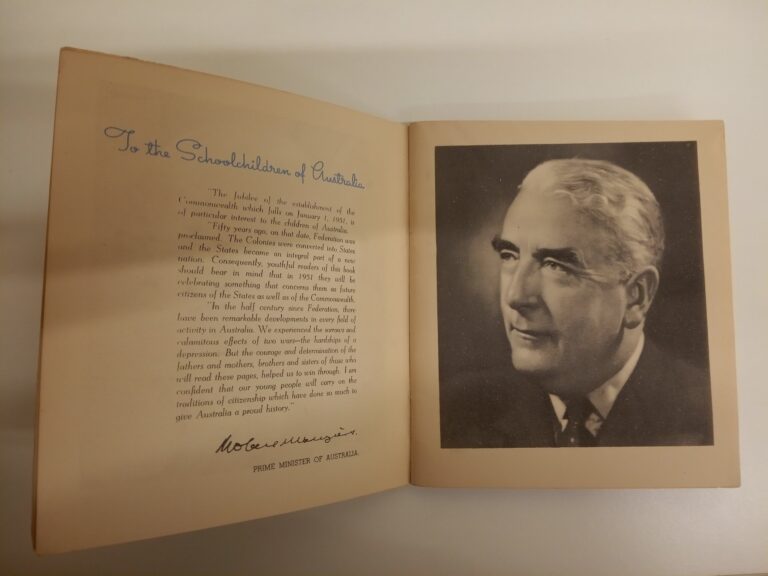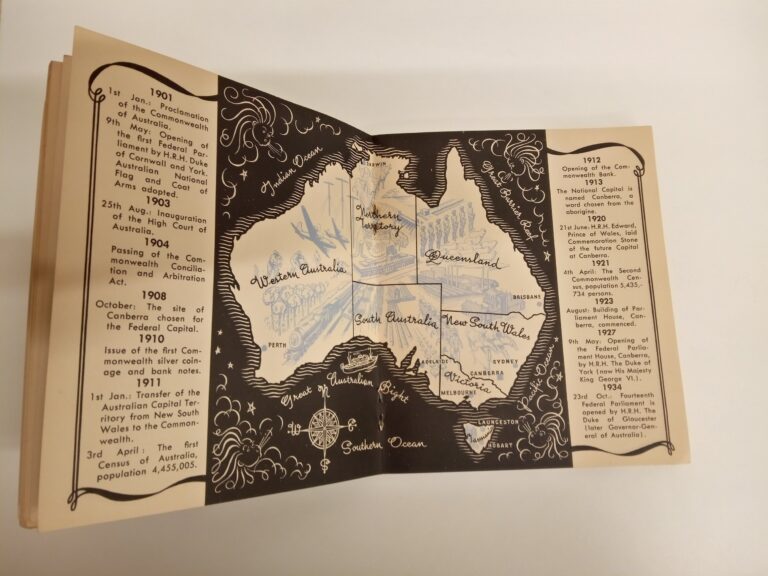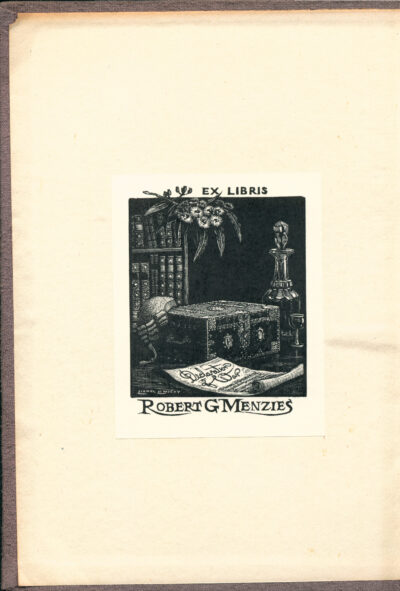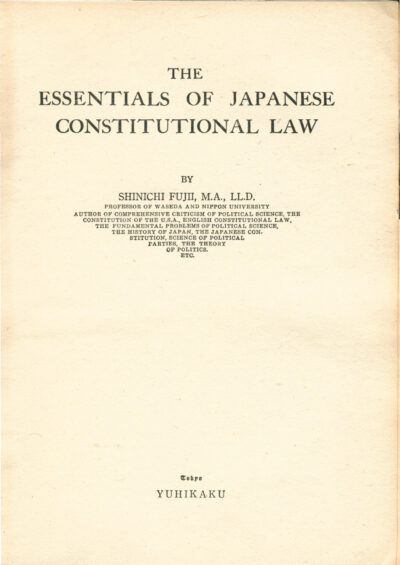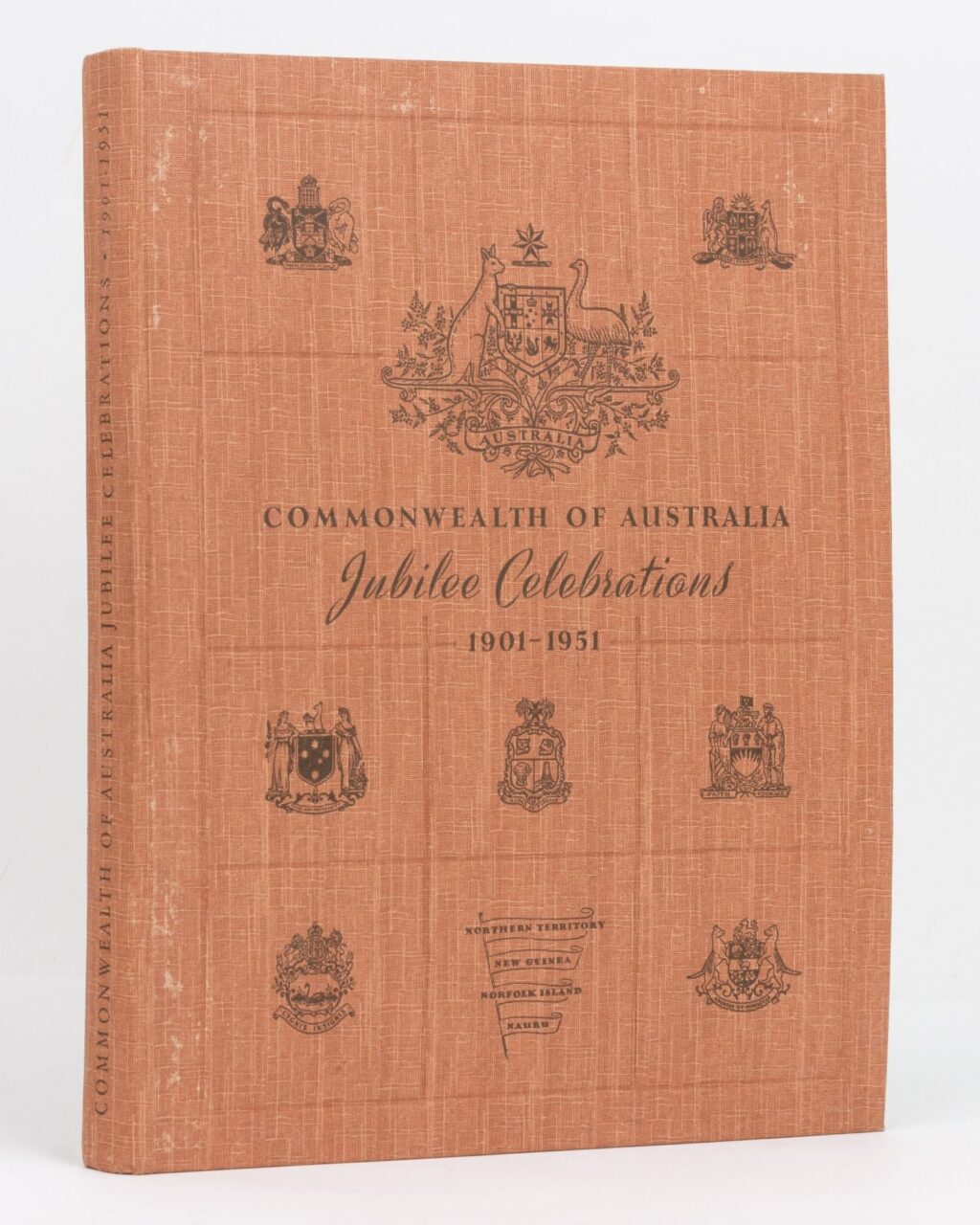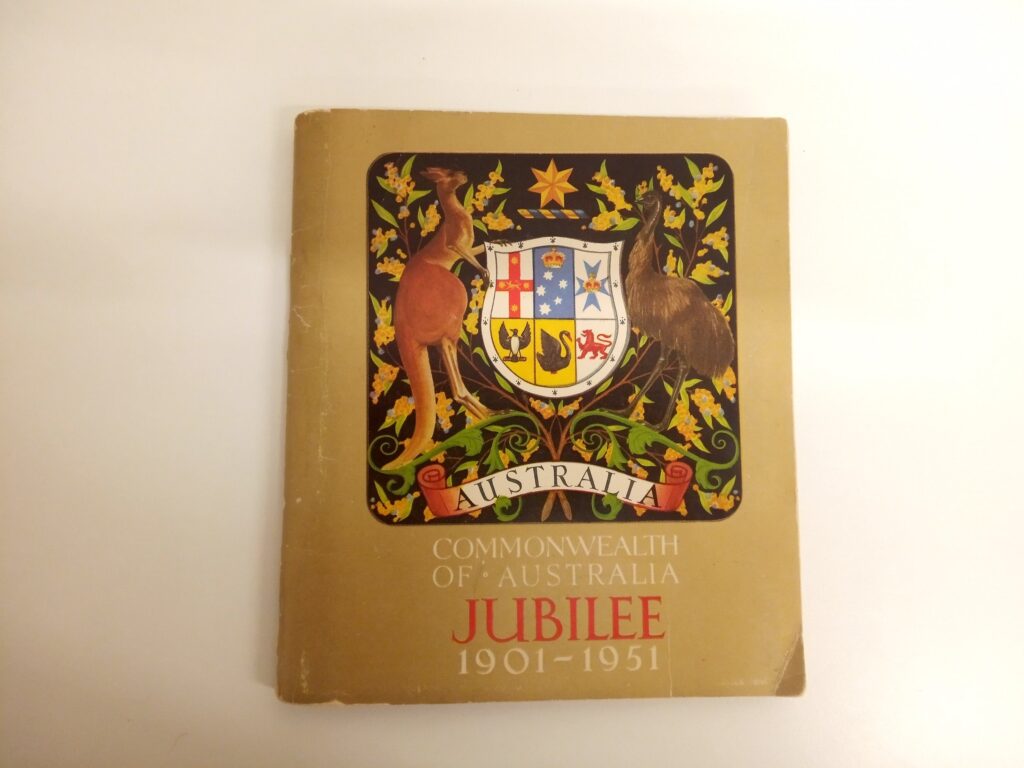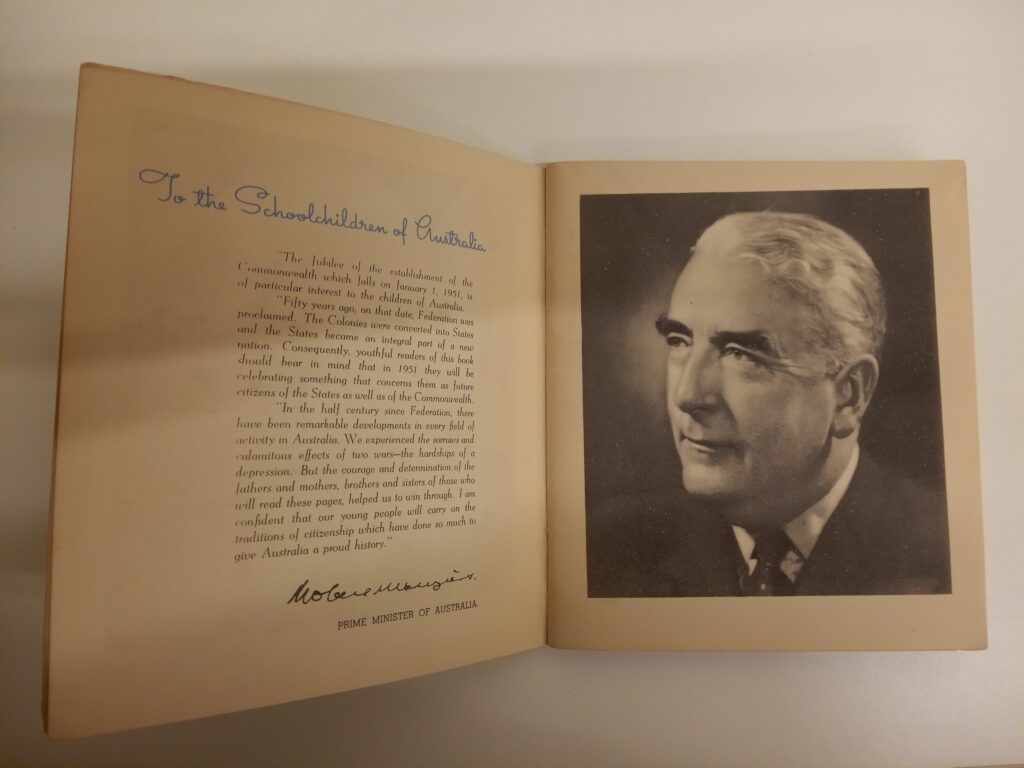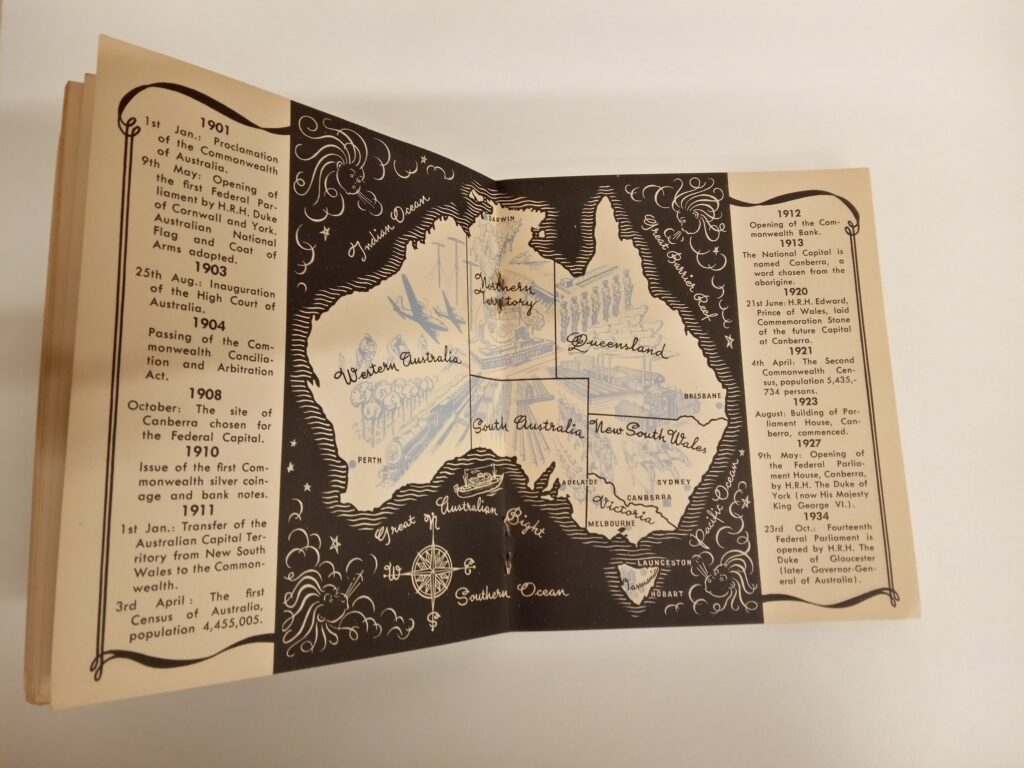Commonwealth of Australia Jubilee Celebrations 1901-1951 (1951)
On 1 January 1951 Australia marked the 50th anniversary of the completion of Federation and the inauguration of the Commonwealth. It fell to what was quite a young Menzies Government to organise the celebrations, which reveal much about how Australia envisaged itself, its history and its aspirations at the time – much of which is documented in the Official Record found in the Menzies Collection.
These celebrations were immense and multi-faceted, lasting throughout the year and ranging from a midnight celebration that saw 150,000 people ring in the New Year in Melbourne, a ‘Cavalcade of Jubilee’ procession through the streets of Sydney on Australia Day, a ‘Miss Australia’ competition, a Jubilee Science Congress held in Brisbane, a cycling relay which collected 300,000 postcards and messages expressing loyalty and pride from around Australia and brought them to the Prime Minister in Canberra, a Wallabies vs All Blacks rugby match, a nation-wide theatre competition with a cash prize, a ‘Commonwealth Jubilee Big Game Fishing Championship’, a tour of Navy ships from all corners of the Commonwealth, commemorative newspaper pull-outs, the writing of original songs, and much more. Planning began in early 1950, with a special council being set up featuring representatives of the Prime Minister’s Department, the individual States, the A.C.T.U., the R.S.L, the Australian Natives’ Association, the Country Women’s Association, business associations, press associations, and agricultural groups; an extremely broad cross-section of Australian society.
The Menzies Government had key themes it wanted emphasised, including Australia’s progress over 50 years – and indeed since 1788, the growth of Australian industry, commerce and science, the strengths of our democracy and legal system, and the representation of ‘new Australians’ – celebrating both their cultural heritage but also their assimilation into one Australia. The Government committed £350,000 of funding to be distributed around the country, with Treasurer Arthur Fadden telling Australians to ‘build jubilee community centres, hospitals, swimming pools, and roads, plant trees and create parks as memorials to fifty years of nationhood. This would be the concrete expression of gratitude for the work of those who built up Australia so remarkably in so brief a period and will give us a flying start for the next fifty years’.
Another central emphasis was on the future, and on the children who would be responsible for celebrating the centenary celebrations in 2001 and shaping what the country had by then become. A particularly fascinating artefact is a booklet presented to school students which aimed to teach them about their nation’s history.
After a form noting the recipient’s name and school, the booklet begins with a note from Menzies reading ‘To the Schoolchildren of Australia’:
‘The Jubilee of the establishment of the Commonwealth which falls on January 1, 1951, is of particular interest to the children of Australia. Fifty years ago, on that date, Federation was proclaimed. The Colonies were converted into States and the States became an integral part of a new nation. Consequently, youthful readers of this book should bear in mind that in 1951 they will be celebrating something which concerns them as future citizens of the States as well as of the Commonwealth. In the half century since Federation, there have been remarkable developments in every field of activity in Australia. We experienced the sorrows and calamitous effects of two wars – the hardships of a depression. But the courage and determination of the fathers and mothers, brothers and sisters of those who will read these pages, helped us to win through. I am confident that our young people will carry on the traditions of citizenship which have done so much to give Australia a proud history.’
Menzies raised an important point – it had been a particularly rough 50 years starting with the federation drought and ending with the looming threat of the Cold War escalating into a third world war. Nevertheless, Australians had come together in times of hardship and could be proud of a wide range of achievements over a comparatively short period of time.
The booklet captures how Australian history was taught to children at this time, and what is remarkable is its aspirational character and the level of detail they were expected to take in. Not only was there staples like Captain Cook and the First Fleet, there was also William Dampier, the race with France, the complexities of the convict system, the crossing of the Blue Mountains, Macarthur and the development of the Australian wool industry, the exceptional circumstances of the founding of South Australia and Western Australia, the evolution of the Governor’s advisory council into Responsible Government, and the rise of tariff protection; all before the booklet got round to the actual history of federation, the intricacies of parliamentary democracy, the establishment of Canberra, and all that had happened since.
The booklet really is a testament to just how lively and interesting Australian history is, and that the current generation of educators and administrators can do much more to teach children our story and to inspire them to play their own important role in it.
You might also like...
Sign up to our newsletter
Sign up for our monthly newsletter to hear the latest news and receive information about upcoming events.

